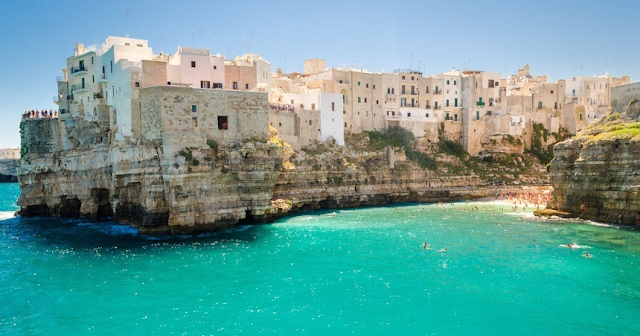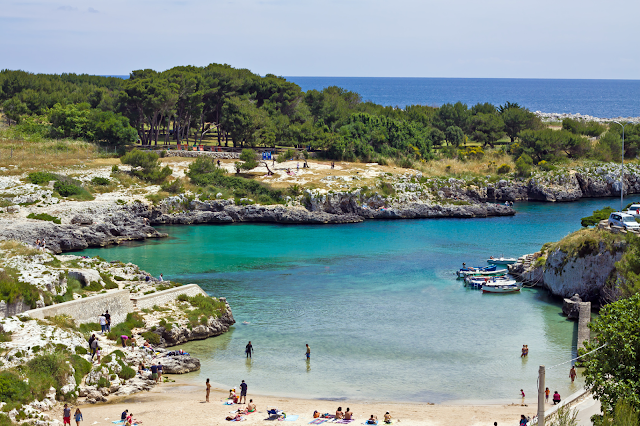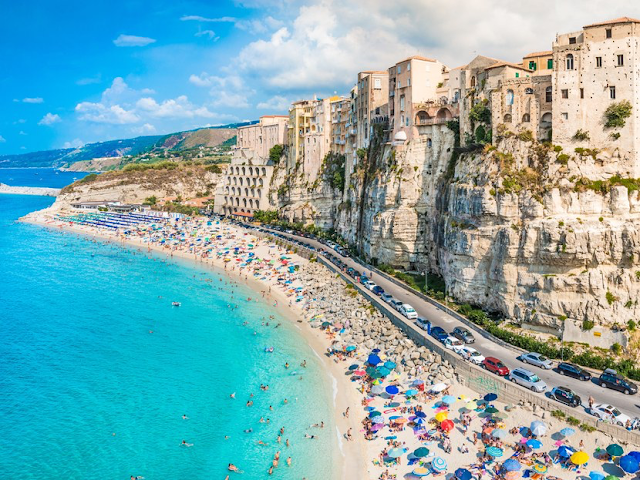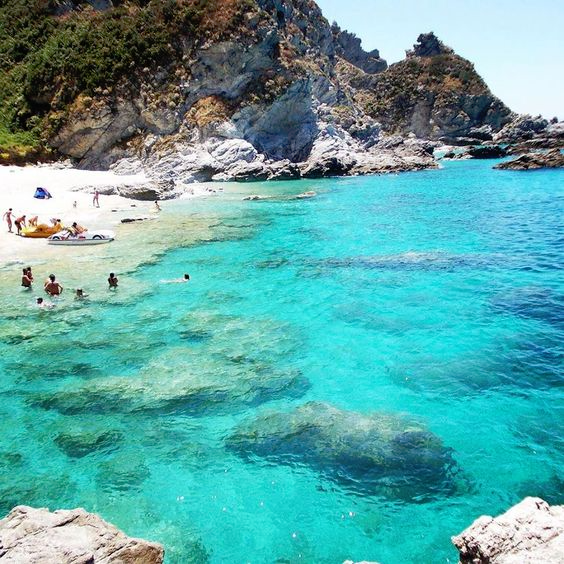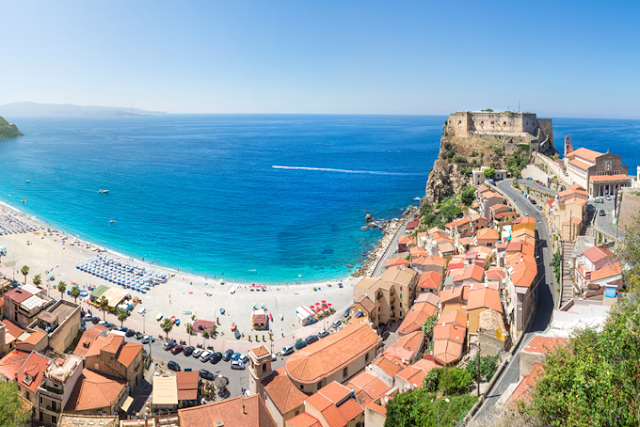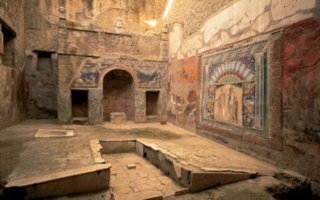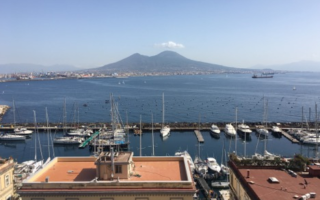Calabria vs. Puglia
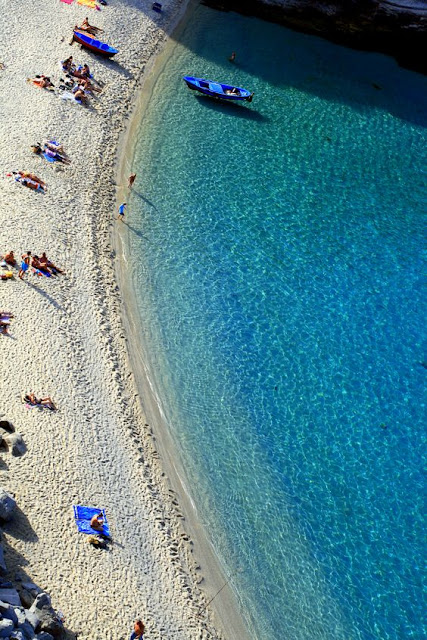 |
| Beach In Calabria Region |
Best beaches in Puglia – Torre dell’Orso
Named after the sixteenth-century tower that stands in ruins above the coast, Torre dell’Orso is easily among Puglia’s most beautiful beaches. The golden bay stretches on for almost a kilometer, lapped by crystal-clear turquoise waters and flanked by rolling sand dunes and pine forests. It’s accessible only by car. But the coastal drive along the Adriatic is a treat in and of itself.
Polignano al Mare
Porto Badisco
The beach at Porto Badisco may be the smallest on this list, but what it lacks in size it more than makes up for in character. Located around eight kilometers south of Otranto, Porto Badisco has a remarkable history: In his epic the Aeneid, the Latin poet Virgil wrote that Apulia’s Porto Badisco was the landing place of Aeneas (the mythical founder of Rome) after his flight from Troy. And stretching back even further, the beach is home to the “Grotta dei Cervi” (the Cave of the Deer), with rupestral paintings dating back 4,000 years to the Neolithic period.
Practically on the beach is the restaurant “L’Approdo di Enea” (Aeneas’s Landing) which serves up classic no-frills Puglian land and seafood. That said, if you want a little more variation just to the north is Otranto—a city whose summer scene has become increasingly vibrant in recent years with an influx of young Italian holidaymakers.
Best beaches in Calabria – Tropea Beach
The area around coastal town of Tropea—affectionately known as the “Positano of the South”—is home to scores of stunning beaches. But with its vast stretch of white sands falling away into crystal clear azure waters, Marasusa Beach (just below the town) is surely the jewel in Tropea’s crown. Its view out over the Tyrrhenian is remarkable, but the panoramic behind the beach is no less breathtaking.
Towering above Marasusa Beach is Tropea itself, built upon a cliff of miocenic sandstone and referred to by locals as either “La Rupe” (the cliff) or “Il Scoglio ”(the rock). During the summer Tropea has perhaps the most chill passeggiata in Italy. But it’s unclear whether that’s because of the climate or because the locals are so stuffed on gelato from Gelati Tonino. Onion and cuttlefish is one of the more exotic flavors at this cornerstone establishment, though we won’t judge you for going for something a little more… traditional.
Capo Vaticano
Just over ten kilometers southwest of Tropea is Capo Vaticano. It’s a wild, rugged stretch of coastline. Sheer, jagged cliffs fall dramatically away into the turquoise waters below. And it’s also an area of international geological interest; the cape itself composed of a unique white-gray granite.
Capo Vaticano isn’t the easiest place to get to. It’s not particularly well signposted, being situated on the Wild West of the Calabrian coastline. But if you’ve got a car—which is absolutely essential if you’re going to be traveling the area—it definitely deserves a day trip. Pristine white sands and Bahamas-blue waters characterize all of the beaches along this promontory. And just as rewarding as the warm waters below are the panoramas above, with some vantage points reaching heights of 124 meters.
The cape’s beaches aren’t easily accessible. To get to some, you have to descend dusty narrow paths; to get to others, you have to wade through the shallows. And the beaches also vary in terms of size and service. One of the most popular is “La Spiaggia di Grotticelle”, partly because it wouldn’t look out of place in the Caribbean and partly because of what its beachgoers have at their disposal: sunbeds, umbrellas, a bar and restaurant, and pedalos and canoes for hire.
Scilla
With its rich historical and mythological tradition, the hilltop town of Scilla is Calabria’s answer to Puglia’s Porto Badisco. It features in Homer’s Odyssey as the site where the gruesome monster Scylla claimed the lives of six of Odysseus’s crew. And while obviously no traces remain of this ancient myth, the remnants of relatively more recent history stand looming over the town in the form of its eleventh century castle.
The town’s pastel house lined beachfront has something for everyone. Being a shingle beach its pristine waters are exceptionally clear. And during the summer months, locals and tourists pass their time swimming, sun worshipping or snacking at one of the many quality restaurants or trattorie dotted around the town and beachfront.
Out to sea the waters are teeming with small fishing boats that stock Scilla’s restaurants with the culinary specialty the town is most proud of—swordfish. And for those wanting to go yet (and for that matter deeper) out, Scilla Diving Center offers a wide selection of expeditions ranging from rusting shipwrecks to enchanting reefs.
The Verdict
Both of the regions at the heel and the toe of the country are steeped in stunning beaches. And although Puglia digs into the Adriatic while Calabria dips its toe into Tyrrhenian, there’s little to separate them in terms of the quality, color and cleanliness of their waters.
Ultimately, Calabria probably has the more beautiful beaches. But unfortunately—at least for now—it also lacks the infrastructure of its northern neighbor. Calabrian tourism can be pretty hit and miss. Sure it offers rustic charm and authenticity. But such authenticity comes at a price, and knowing some basic survival Italian is far more likely to come in handy here than in Puglia. And while its coastline may for the most part be unspoiled—save the sprawling container port of Gioia Tauro—the same cannot be said for its interior.
Puglia, on the other hand, is far better adapted to cater for tourists. And, away from the beaches, it boasts more things to see. There’s Alberobello, with its iconic trulli houses; Brindisi, a lively urban hub, foremost amongst the country’s harbors for over 2,000 years; and there’s one of the region’s (and for that matter the country’s) southernmost towns, Otranto—a modern haven for those seeking the southern summer nightlife.
When to visit Calabria and Puglia
The last thing to bear in mind is the season in which to come. Summer, of course, is the best time, but you’d do well to avoid traveling at the height of August. It’s as this time that entire urban populations flock en masse “al mare” (to the sea), leaving cities across the country empty and pushing up prices along the coast.
June, July and September are the best months to come. And even then, don’t expect to have the beach to yourself. But then why would you want that! After all, what really makes an Italian beach holiday is spending it among the locals; doing what they do, eating where they eat, and—of course—overhearing an elderly Tuscan couple loudly discussing the secret to a perfect ragù sauce. In considerable detail, and for almost two hours.
Written by: Alex Meddings

